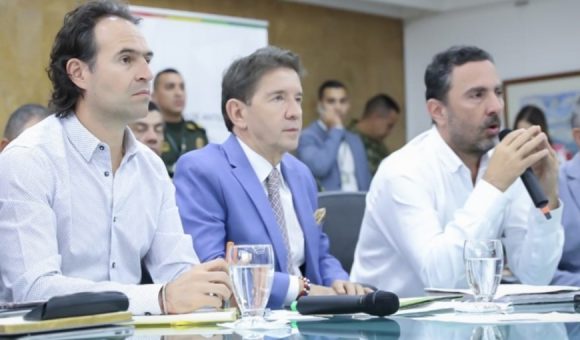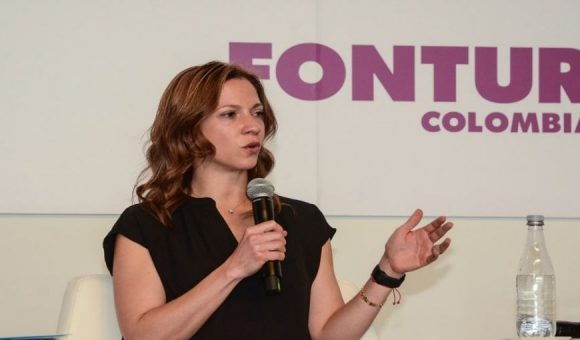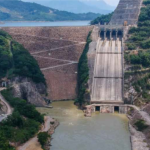EPM To Sell 10% ISA Stake, Chile Assets, Minor Shares to Cover Hidroituango Losses

EPM general manager Jorge Londoño de la Cuesta announced in a July 31 press conference that the company will sell its 10% stake in power transmitter ISA and minority stakes in several other non-strategic companies — as well as its wholly-owned Chilean water and wind-power utilities — over the next six to 12 months.
The sales likely would net EPM between COP$3.5 trillion (US$1.2 billion) to COP$4 trillion (US$1.38 billion), Londoño revealed.
The proposed asset sales still must be approved by Medellin’s City Council, as the city of Medellin is the 100% owner of EPM, Londoño explained.
The asset sales are needed to cover required, continuing investments in utility expansions and upgrades in Colombia, as well as costs for repairing damages and delayed electricity sales at the US$5 billion, 2.5-gigawatt “Hidroituango” hydroelectric dam in Antioquia.
The first electricity sales from the dam are now estimated to start in 2021, rather than the initial plan to start-up the first of eight Hidroituango turbine generators (each 300-megawatts) in December 2018.
A geological fault that led to a diversion-tunnel collapse and machine-room flooding at Hidroituango three months ago has forced EPM to take drastic measures to save the project as well as to ensure continuing payments to the city of Medellin, which gets about 25% of its annual revenues from EPM.
Besides the asset sales, EPM is also contemplating a delay of about 20% of its planned investments (about COP$2 trillion/US$692 million) over the next three to four years, including likely cancellation of an earlier-planned investment in a water desalination plant in Chile.
In addition, EPM has drawn-up plans to slash up-to-COP$1 trillion (US$346 million) in overhead costs over the next four years, or about COP$250 billion (US$86 million) per year.
However, the company won’t slash its estimated COP$10 trillion (US$3.46 billion) budget for planned investments in Colombia (mainly in Medellin and Antioquia) for continuing expansion and upgrade of its water, sewer and electric-power utilities here over the next few years.
Nor will it sell more bonds to raise cash, as EPM aims to maintain its current 3.5-times debt-to-EBITDA (earnings before interest, taxes, depreciation and amortization) ratio for its investment-grade rating, he said.
As for continuing work at the Hidroituango dam and related infrastructure, EPM will have completed a rock-reinforcement project to the current dam height of 418 meters above sea-level by end-August, and will have completed the planned interior concrete wall by end-October 2018, he said.
As for problematic diversion tunnels, a first-phase closing of the collapsed tunnel will be completed by mid-to-late October, while the second and third phases of closure (using cement) will take about another six months, he said.
In addition, two other mainly unused (and mainly undamaged) diversion tunnels will be permanently cemented and shuttered over the next nine months.
As for the machine room – temporarily used to evacuate Cauca River water flows because of the diversion tunnel collapse – workers hope to shut-off river flows to that room by as early as late September, enabling work crews to enter and evaluate damages.
A new diversion-tunnel boring — which would enable draining much of the lake behind the dam, as required to complete certain other dam-construction tasks next year – could be completed by as early as end-2018, he added. This tunnel could evacuate from 400 to 500 meters per second of Cauca River water, he estimated.
On another front, EPM just hired Chilean consultant “Skava” to investigate and provide a definitive report on exactly what caused the diversion tunnel collapse. That investigation starts in August and should be complete in three or four months, he said.
As for insurance coverages, EPM can’t count on payments to cover damage possibly caused by civil-works contractor errors until the Skava report is completed.
Similarly, insurance payments to cover damage to the machine room can’t be estimated until the workers can enter and inspect damages.
As for loss-of-electricity sales – caused by the three-year delay in power-generation start-up – EPM still hasn’t been able to calculate the net financial loss because of remaining uncertainties about when full-scale production of power from Hidroituango will commence, he added.
















